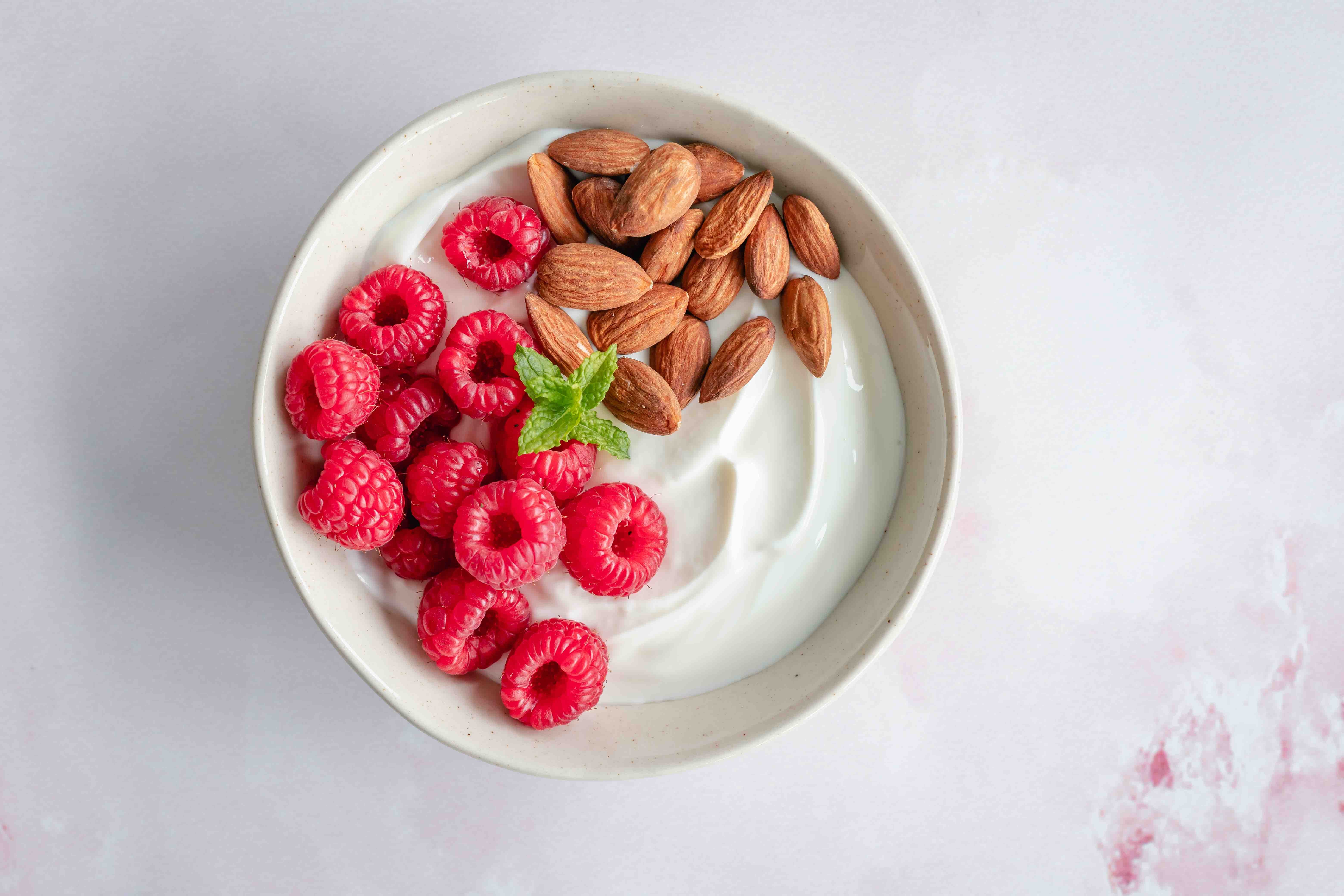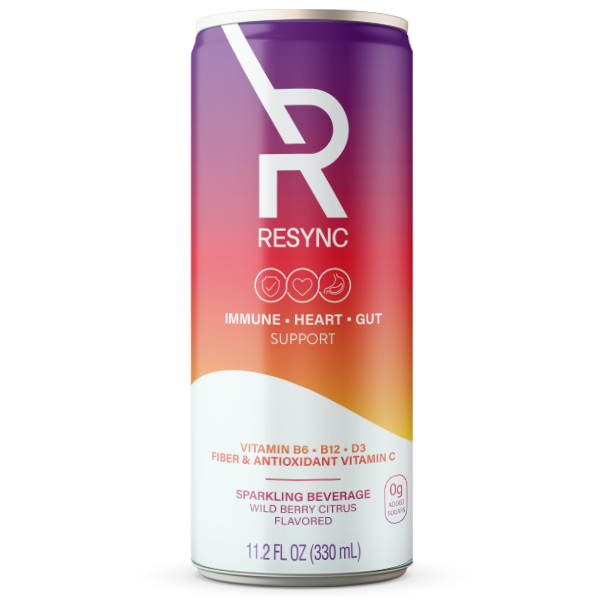Resync
10-3-2022
The Incredible Power of Fiber

You have probably heard before that consuming fiber is good for you.
You may even know that it helps digestion and maintain regular bowel movements. Yet there are so many other benefits that one can get from eating enough fiber.
Let's explore this topic.
Fiber is divided into two classifications: soluble and insoluble.
Soluble Fiber
Soluble fiber mixes with water and creates this gel-type texture.
For example, if you put chia seeds in water, they will become gelatinous after a while. This is because they have soluble fiber. Also, the famous overnight oats get their consistency thanks to soluble fiber. Have you ever heard the statement that oats are "heart-healthy" and that they help lower cholesterol? This is also thanks to soluble fiber. These gel-like components will sequester cholesterol, and as it goes through the gastrointestinal tract, it will end up excreted.
Additionally, most soluble fibers are fermentable.
Why is this good?
Because the microbes that live in our gut (microbiome) can ferment and feed from it. The microbiome is currently a hot topic, and there is a lot of information out there and many things we still do not understand about it.
However for the purpose of this blog, I am going to provide you a fact that is important to understand:
We want to have a symbiotic relationship with our microbiome.
This means that we benefit from them, and they benefit from us. When the microbiome is normal, and we consume enough fiber, we can achieve this good relationship with our microbes. However, suppose we eat a diet high in fatty foods and low in fruits and vegetables (thus, low in fiber). In that case, the composition of the bacteria in our gut can change. As a result, we may see overgrowth of certain types of bacteria that may not be good for us. We call this imbalance in the microbiome dysbiosis. Dysbiosis's effects are constant bloating, abdominal pain and discomfort, and diarrhea or constipation.
Moreover, I mentioned before that our bacteria eat fermented fibers. When they eat those, they produce short-chain fatty acids or SCFA. As SCFA are made, the cells in our gut, called enterocytes, absorb these SCFA, and from there, they can:
- Communicate with our immune cells and call them to protect against harmful bacteria and reduce inflammation
- Aid in gut integrity and function
- There are healthy versions and unhealthy versions of ketogenic diets, make sure you have good information to find the right version of the diet for you.
- Interact with endocrine cells to send indirect signals to the brain to release hormones
- Activate brown fat (the fat that burns calories)
- Regulate the mitochondria in your liver
- Increase secretion of insulin
- Enhance integrity in the blood-brain barrier (helps keep harmful substances from reaching the brain)
- Contribute to the synthesis of serotonin (an important neurotransmitter)
- Improve neuronal function1
As you can see, it is imperative to keep our microbiome well-fed, so we need to consume soluble fibers.
However, you may wonder what happens if we do not eat enough fiber.
A study examining this issue explained that the bacteria that like to eat fiber would die without this nutrient2. This opens the door for other bacteria to grow. This new bacteria cannot be fiber-dependent (this overgrowth is dysbiosis).
Now, the new bacteria eat the mucosal barrier. The mucosal barrier in our gut protects our enterocytes (gut cells) from harmful substances. However, if this barrier is diminished, toxic substances can attack our gut cells and cause inflammation, colitis, and inflammatory bowel syndrome (IBD). It can even promote the evolution of colorectal cancer. Thus, the relationship with this bacteria is no longer symbiotic. This is because now they are doing something harmful to us. You could call this a one-sided/toxic relationship.
Nobody wants that.
If you would like to learn more on microbiome, check our blog: What Is The Microbiome & What Foods Support Your Gut Health
4 KEY BENEFITS OF FIBER
BEYOND GUT HEALTH
Like & Subscribe to our youTube channel for educational videos on the latest hot topics in the industry
VISIT YOUTUBE CHANNELInsoluble Fiber
Now it is time to talk about what happens to insoluble fiber.
This type of fiber is the one that moves material through your gastrointestinal tract. This fiber cannot be broken down by our digestive enzymes nor fermented by our microbiome. Instead, think about insoluble fiber like a mesh that carries around the soluble-fiber gel. Together, these two fibers form a net that can pick up excess cholesterol along with other compounds and travel to your toilet.
Insoluble fiber is primarily found in the cell wall of plants, so vegetables usually have a good amount of it. It is also found in the peels of fruits and starches such as potatoes and in whole grains.
Is one fiber more important than the other?
The answer is no. Both soluble and insoluble fibers are vital for our health. We need both to have proper functioning of our gastrointestinal tract. Now you may wonder how much fiber you should eat and where to find it.
Let's talk about that.
The general recommendation is 14 g of fiber per 1000 calories consumed, so if you eat 2000 calories, you will want 28 grams of fiber.
According to the Mayo Clinic, women should try to eat at least 21 -25 grams of fiber. Men, on the other hand, should aim for 30 - 38 grams of fiber a day. Here is a list of foods rich in fiber:

This is a short list.
Most fruits and vegetables have some amount of fiber in them. Another way to add fiber to your diet is to take a fiber supplement. Usually, they come in powder form, and you can mix them in your favorite beverage, yogurt, or even oatmeal.
Most supplements have either soluble or insoluble fiber, although a few have both. Pectins, gums, B-glucans, and some hemicellulose are soluble fibers. Cellulose, lignin, and some
hemicelluloses have insoluble fiber.
If you cannot find a supplement with both, just get one for insoluble fiber and one for soluble and drink one of the supplements one day and the other the next day. Also, when you are increasing your fiber intake, go slowly!
If you do not consume almost any fiber, you may want to increment 5-7 grams of fiber at a time until you reach your goal. One crucial thing to remember is that fiber needs water, so make sure you drink plenty daily.
Snack Tip:

- 1 cup natural Greek yogurt
- 1 scoop of a fiber supplement (7 - 10 g fiber)
- ½ raspberries
- 15 almonds
Unfortunately, most people are not meeting the requirements for daily fiber intake. This lack of fiber is associated with many chronic diseases, such as obesity, diabetes, cardiovascular, and gastrointestinal disease. Take action today, you have the power to prevent these conditions!
Track your fiber for a few days to make sure you are consistently getting enough.
Remember, Resync is here to help you live a healthier life.
Check Out Resync's Latest Blogs
Boosting Recovery With ATP Supplements: Fact or Fiction?
Estrogen, Collagen, & The Female Athlete. New Research
We Want To Hear From You!
Want the practical details on how to eat and supplement to support your exercise recovery, heart health, beauty, and energy levels?
Subscribe to our feed and never miss out!
Resync is backed by research. That’s why we break down complex science into practical takeaways you can use today. When you have the right information, you are empowered to make the right decision for you.
If there's something you want to know more about, let us know by contacting us or getting in touch on social media!
Helping you lead a healthier life,
-The Resync Team
Author

Natasha Sugimoto, RD
Tags
Gut Health
Nutrition
References
Want To Receive More Nutritional Guidance?
Sign up for our newsletter & get 20% off your order PLUS the latest information to support your health & wellness!








